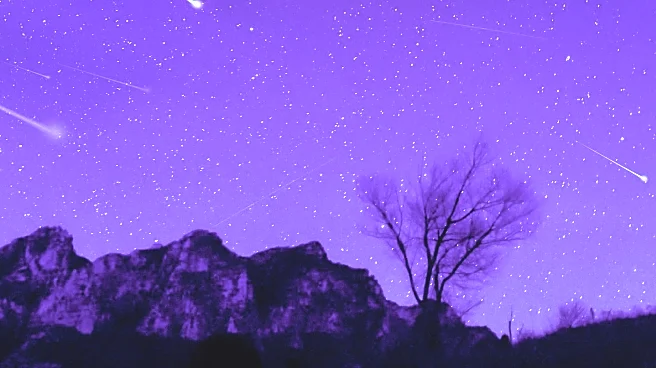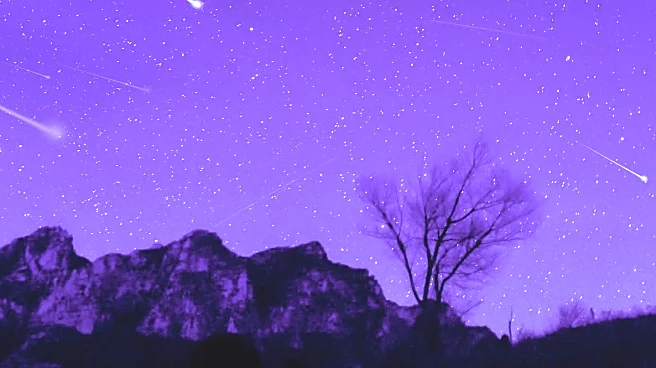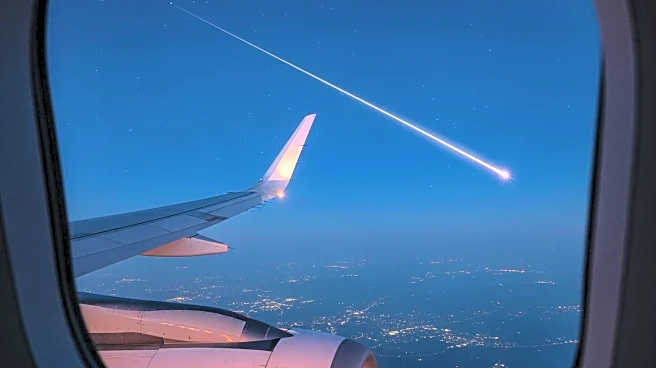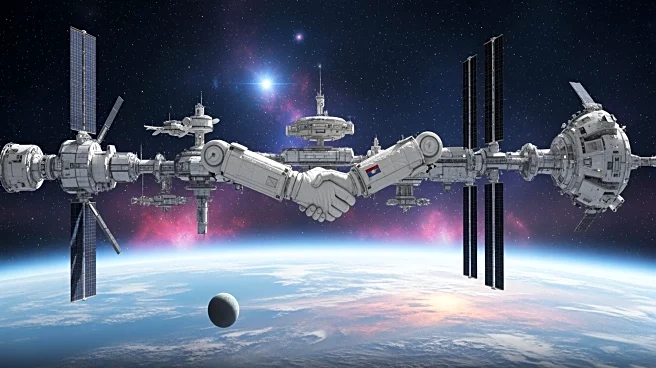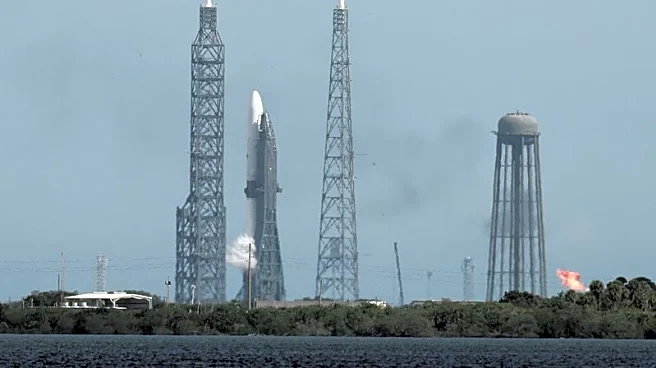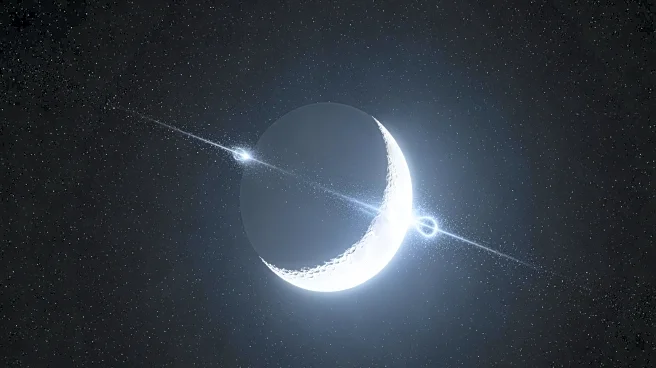What's Happening?
The Leonid meteor shower, known for its bright and fast-moving meteors, is set to peak on the night of November 16-17, offering a display of up to 15 meteors per hour. This celestial event occurs as Earth
passes through the debris field left by the comet Tempel-Tuttle. The shower will be visible across the United States, with the best viewing conditions expected just after midnight against a nearly moonless sky. The Leonids are accompanied by the Southern and Northern Taurid meteor showers, adding to the spectacle.
Why It's Important?
Meteor showers like the Leonids provide an opportunity for public engagement with astronomy, sparking interest in celestial phenomena and encouraging outdoor observation. The event highlights the dynamic nature of Earth's interaction with cosmic debris, offering insights into the composition and behavior of meteoroids. For astronomers and enthusiasts, the Leonids serve as a reminder of the vastness of space and the ongoing processes that shape our solar system.
What's Next?
As the Leonid meteor shower continues through November 30, stargazers are encouraged to find dark, rural locations away from city lights for optimal viewing. The event may inspire educational programs and community gatherings focused on astronomy, fostering a deeper appreciation for the night sky. Future meteor showers will continue to provide opportunities for observation and study, contributing to our understanding of cosmic phenomena.
Beyond the Headlines
The Leonid meteor shower's visibility across the U.S. may lead to increased interest in amateur astronomy and the use of telescopes and other observational tools. This event also underscores the importance of preserving dark sky areas to ensure the continued enjoyment and study of celestial events.



